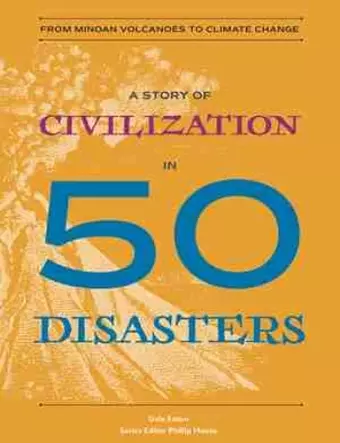A Story of Civilization in 50 Disasters
From the Minoan Volcano to Climate Change
Gale Eaton author Phillip Hoose editor
Format:Paperback
Publisher:Tilbury House,U.S.
Published:1st Jul '19
Should be back in stock very soon

Civilization rearranges nature for human convenience. Clothes and houses keep us warm; agriculture feeds us; medicine fights our diseases. It all works—most of the time. But key resources lie in the most hazardous places, so we choose to live on river flood plains, on the slopes of volcanoes, at the edge of the sea, above seismic faults. We pack ourselves into cities, Petri dishes for germs. Civilization thrives on the edge of disaster. And what happens when natural forces meet molasses holding tanks, insecticides, deepwater oil rigs, nuclear power plants? We learn the hard way how to avoid the last disaster—and maybe how to create the next one. What we don’t know can, indeed, hurt us. This book’s white-knuckled journey from antiquity to the present leads us to wonder at times how humankind has survived. And yet, as Author Gale Eaton makes clear, civilization has advanced not just in spite of disasters but in part because of them. Hats off to human resilience, ingenuity, and perseverance! They’ve carried us this far; may they continue to do so into our ever-hazardous future.
The History in 50 series explores history by telling thematically linked stories. Each book includes 50 illustrated narrative accounts of people and events—some well-known, others often overlooked—that, together, build a rich connect the-dots mosaic and challenge conventional assumptions about how history unfolds.
- Dedicated to the premise that history is the greatest story ever told.
- Includes a mix of “greatest hits” with quirky, surprising, provocative accounts.
- Challenges readers to think and engage.
- Includes a glossary of technical terms; sources by chapter; teaching resources as jumping-off points for student research; and endnotes.
- Fountas & Pinnell Level Z+
"Lest readers get preoccupied by body counts and deciding which disaster was the worst, the real lessons to be derived are discussed in a brief conclusion. What's most important is how people responded to the disasters: some people became heroes, some organized relief efforts, some looted, some blamed others, and some got to work trying to prevent future disasters. ... A fascinating volume especially suited for browsing. (glossary, sources and additional resources, endnotes, index)" -- Kirkus
"When given the choice of which book to review, the title of this one stood out to me. I live in Oregon, and right now there is an increasing risk of earthquakes, volcanoes and tsunamis in the state. If it’s going to happen I might as well know what to do. (I guess it also counts as studying world history.)
The author did a fantastic job of compiling information and photographs to support the main event of each chapter. It was interesting that several of the events I had never even heard of. The book showed me that government tended to blame foreigners or minorities for the disasters, even when sometimes it was unknowingly of their own doing. Another thing that surprised me was that the disasters that took more lives were not volcanoes or earthquakes. More often than not, it was sickness, or an outbreak of a disease. (The Bubonic Plague, for example, killed about 1/3 of Europe’s population.)
When the volcanoes and earthquakes did happen, they usually gave weeks or even months of warning, and the most damage happened when people did not evacuate. (That’s one piece of information I can use! When they tell me to evacuate, I will!)
I really enjoyed this book and I hope other readers will, too. I would recommend it for ages 12 and up. It can also be used as a teaching resource in a classroom.
" -- Owen McCoy, 13, homeschooler - Skipping Stones
"Critique: A novel and effective way to for students and non-specialist general readers with an interest in how civilizations were stimulated to evolve in response to traumatic, unexpected, and often horrific disasters, "A History of Civilization in 50 Disasters" is a compelling read that is as informed and informative as it is thoughtful and thought-provoking. Thoroughly 'reader friendly' in tone, content, organization, and presentation, "A History of Civilization in 50 Disasters" is very strongly recommended for both community and academic library World History reference collections and supplemental studies reading lists. Of immense interest to student and non-specialist general readers with an interest in history" -- John Taylor - The Midwest Book Review
ISBN: 9780884487487
Dimensions: 241mm x 168mm x 15mm
Weight: 602g
288 pages